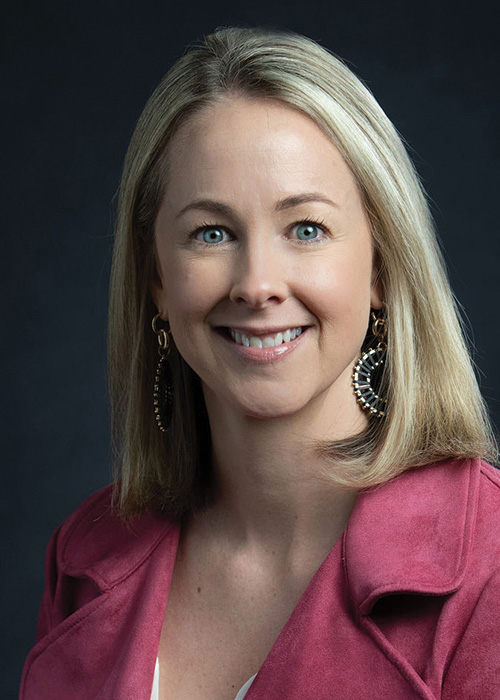Insights from the Target Markets
Program Administrators Association
By Gene Abbey and Sarah Ayars
The expansion of the program marketplace and the growth of the Target Market Program Administrators Association (TMPAA) reflect a dynamic and evolving industry landscape. This growth is a testament to the increasing importance and complexity of program business within the broader insurance sector.
The TMPAA currently has 692 members, comprising 407 program administrators, 91 carriers, and 201 service providers. Our Mid-Year and Summit events are experiencing significant growth, evidenced by a nearly 30% increase in attendance. For the upcoming October Summit, we anticipate hosting nearly 1,600 program business professionals.
The program insurance sector is expected to exceed $100 billion in premium in 2024. This precise figure will be unveiled in our 2025 TMPAA State of Program Business report at the association’s 25th Annual Summit in Scottsdale.
For the TMPAA, one of the more notable developments in 2024 was the transition of leadership change. Ray Scotto, who has served as the association’s executive director since its inception in 2002, is transitioning to senior executive.
Assuming the position of executive director is Gene Abbey, a longstanding TMPAA member and the director of insurance services and education since 2023. Concurrently, Sarah Ayars, who has been with the association for 15 years, will share management responsibilities as the director of operations and marketing.
[T]he future of the program business ecosystem looks promising, with a
strong emphasis on adaptability, collaboration, and forward-thinking strategies.
“The association continues to grow along with the program space, creating challenges and opportunities to meet the evolving needs of our members and provide value for their membership investment,” says Scotto. “Gene and Sarah are perfectly suited to meet these challenges and will continue to advance this amazing organization which I will continue to support in a new capacity.”
“The association continues to grow along with the program space, creating challenges and opportunities to meet the evolving needs of our members and provide value for their membership investment.”
—Ray Scotto
Senior Executive
Target Markets Program Administrators Association

This groundbreaking designation was officially launched in May and is poised to set a new standard for excellence in program business expertise.
The TMPAA has ramped up efforts to engage students and create an awareness of program insurance by involving them in TMPAA meetings. Additionally, the TMPAA recently became a Sustaining Partner of Gamma Iota Sigma, the premier collegiate organization for students interested in careers in insurance, risk management, and actuarial science.
This will provide a gateway for TMPAA members to access student talent, including over 5,000 students and 162 colleges and universities. Additionally, it is a means for the TMPAA to create an awareness and understanding of the program insurance industry to students, colleges, and universities alike.
Furthermore, a concerted effort to expand the TMPAA Charities organization, which provides scholarships to risk and insurance students, along with the Packages from Home initiative serving deployed military, is underway. This will include contracting with new universities for additional student scholarships. The expansion will be supported by additional donations and the creation of a charitable endowment program.
The program business landscape is indeed undergoing a significant transformation. As the TMPAA grows and evolves, it reflects the broader shifts in the industry. The TMPAA’s strategic initiatives and focus on innovation and collaboration are critical in navigating the complexities of program business.
Here are a few key aspects driving this transformation:
- Technological advancements. The integration of advanced technologies, such as artificial intelligence and data analytics, is revolutionizing how programs are developed and managed. This creates opportunities for more personalized and efficient solutions, enhancing both operational effectiveness and customer satisfaction.
- Market dynamics. Shifts in market demands and customer expectations are prompting program administrators to innovate continuously. The focus is shifting towards more specialized and tailored insurance solutions that address emerging risks and changing needs.
- Collaboration and networking. The TMPAA fosters collaboration among members, facilitating the exchange of best practices and the development of strategic partnerships. This collective approach helps address common challenges and leverage new opportunities.
- Talent and leadership. The dedication and vision of industry leaders are essential in steering the program business landscape towards a prosperous future. Investing in talent development and leadership is key to driving sustained growth and innovation.
In conclusion, the future of the program business ecosystem looks promising, with a strong emphasis on adaptability, collaboration, and forward-thinking strategies. The TMPAA’s leadership and its members are well-positioned to navigate these changes and shape a thriving industry.

The authors
Gene Abbey, MSRI, MBA, CPL, is executive director of Target Markets Professional Administrators Association. He has spent more than 30 years as a P-C insurance professional with an expertise in multi-line commercial coverages and risk management solutions. Gene has served in leadership positions for insurance carriers, program administrators, and service providers. Most recently, he earned master’s degrees from Butler University and Cleary University.

As director of operations and marketing, Sarah Ayars oversees Target Markets Program Administrators Association event management, day-to-day operations, and marketing activities. Before joining Target Markets in 2010, she was communications coordinator for Performance Marketing, where she implemented marketing strategies for clients in a wide range of industries. She has a bachelor’s degree in advertising/public relations from The Pennsylvania State University.





